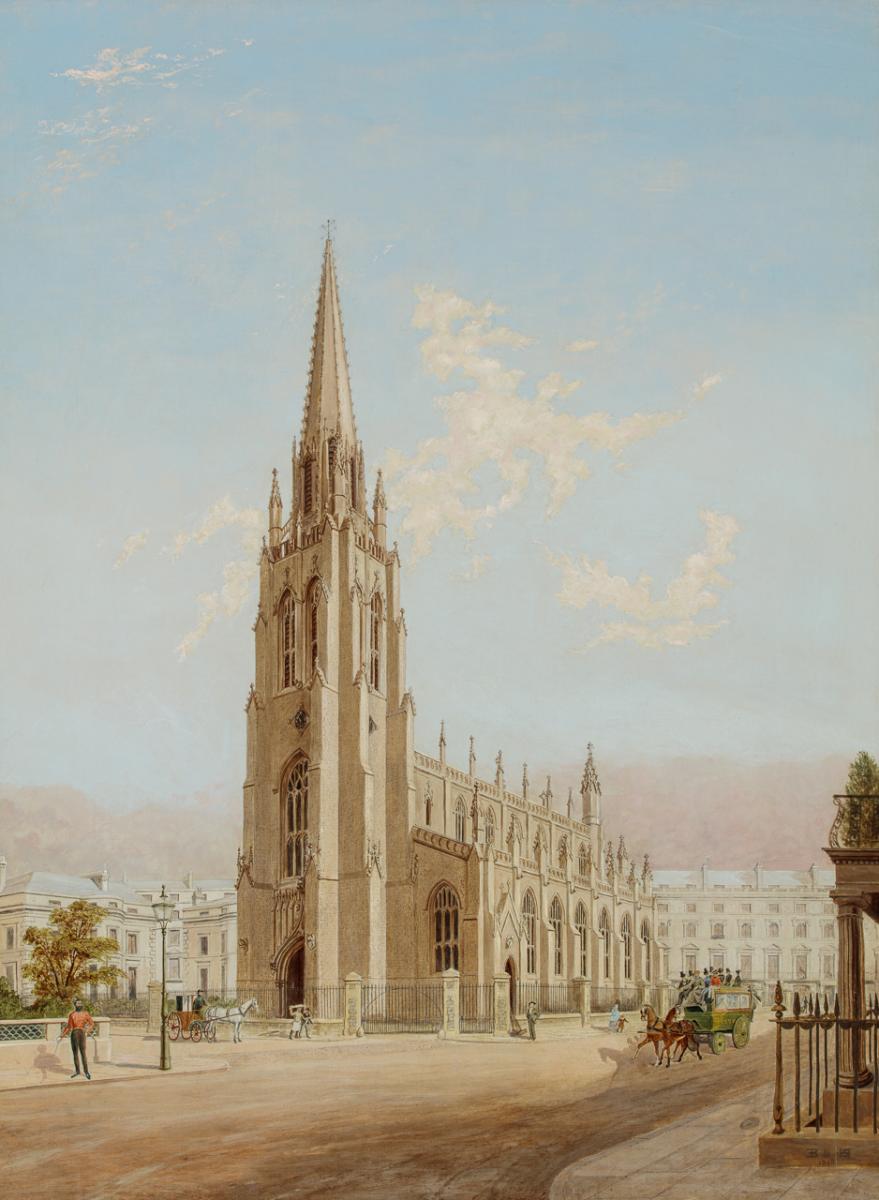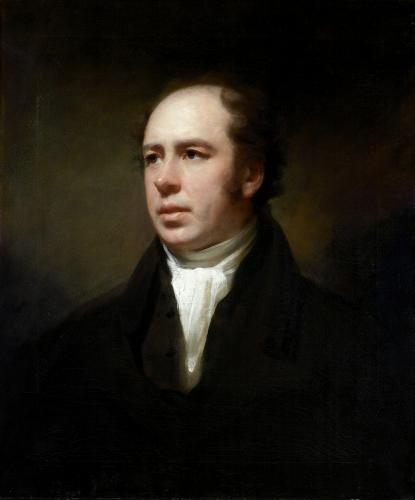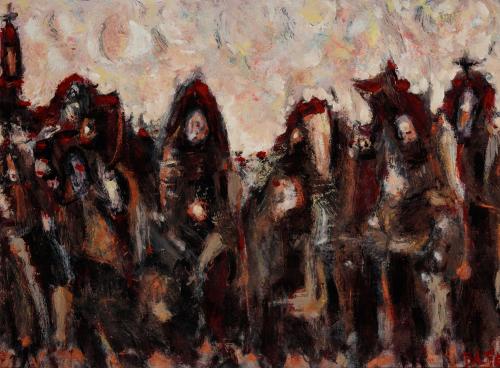

Price on application
This object is eligible for a Certificate of BADA Provenance
The BADA Standard
- Since 1918, BADA has been the leading association for the antiques and fine art trade
- Members are elected for their knowledge, integrity and quality of stock
- Our clients are protected by BADA’s code of conduct
- Our dealers’ membership is reviewed and renewed annually
- Bada.org is a non-profit site: clients deal directly with members and they pay no hidden fees
Thomas Hosmer Shepherd 1793 (France)-1864 (Islington)
with figures by the artist E.B.
One of London’s lost 19th century churches:
Holy Trinity Church, Gloucester Gardens, Bishop's Road, Paddington
Signed lower right H.S. and E.B. and dated 1858
Thomas Hosmer Shepherd is best known for his watercolour drawings of street views, especially in London, many of which were published as book illustrations or as individual prints. This oil painting was clearly an important commission. The church and surrounding buildings are painted by Shepherd while the figures are the work of E. B. (as yet unidentified).
The painting records a detail in the development of the land to the south of the old hamlet of Westbourne. Building around Westbourne Green had begun by the 17th century. It was still considered a beautiful, rural, place in 1820. The Grand Junction Canal was considered a scenic enhancement and was later used to attract expensive houses to the area.
In the mid-19th century this southern area was being intensively developed with a plan including spacious terraces and squares for the affluent middle classes. This urbanisation of old villages and hamlets was also influenced by the introduction of new transport hubs close by. Paddington basin, the terminus of the Paddington arm of the Grand Junction Canal, had opened in 1801. The cutting of the Great Western Railway across the middle of Paddington Green began in 1836. In 1838 a temporary station was opened on the Bishop’s Bridge Road for the new railway line which had been constructed as far as Maidenhead. 1841 saw the opening of the complete line to Bristol and a consequential growth in traffic. In 1850 the Great Western Railway Company commissioned Brunel to build the permanent Paddington Station beside Eastbourne Terrace and this was opened in 1854.
The residential developments created a need for new churches. Holy Trinity Church was built between 1844 and 1846 to the designs of Thomas Cundy. By 1859, when this picture was painted, the character of the area had changed very fast. The new, wealthy residents had attracted the development of new shops in Westbourne Grove which were described in the Paddington News in 1859 as “unsurpassed by any in London”.
Holy Trinity closed in 1971. The magnificent spire (with which there seem to have been structural problems since the early 20th century) was demolished in 1972 and the rest in 1984.
Dimensions
Oil on canvas, 122 x 91.5 cms.Condition report
Very good.Stock number
S0260The BADA Standard
- Since 1918, BADA has been the leading association for the antiques and fine art trade
- Members are elected for their knowledge, integrity and quality of stock
- Our clients are protected by BADA’s code of conduct
- Our dealers’ membership is reviewed and renewed annually
- Bada.org is a non-profit site: clients deal directly with members and they pay no hidden fees




